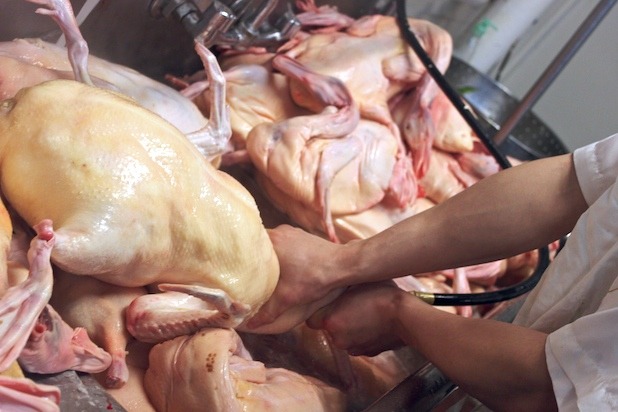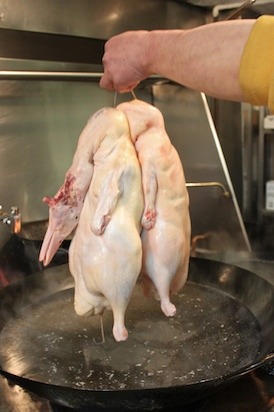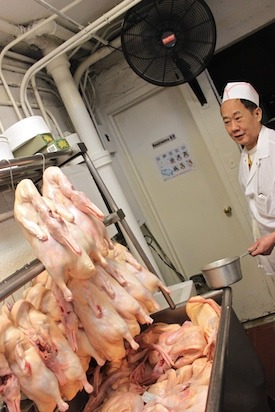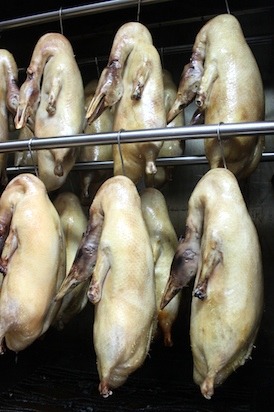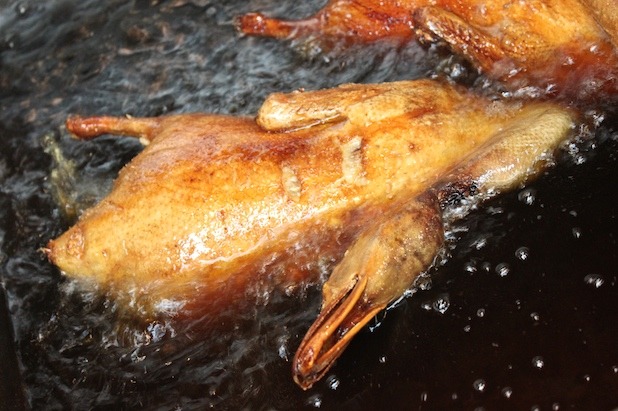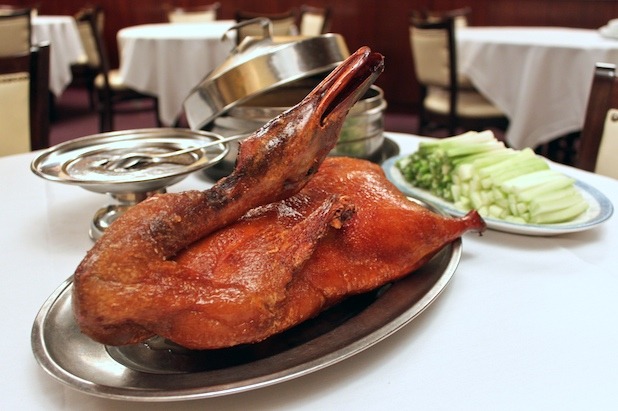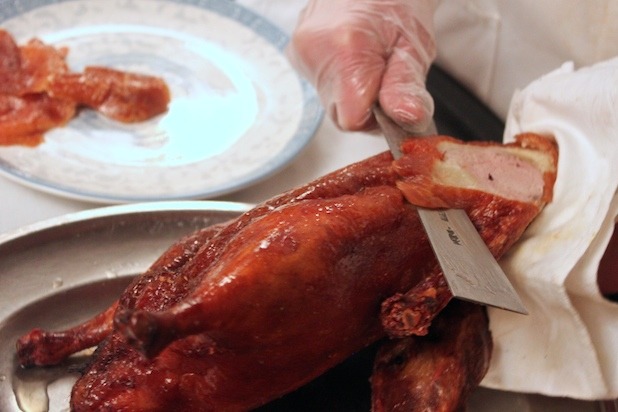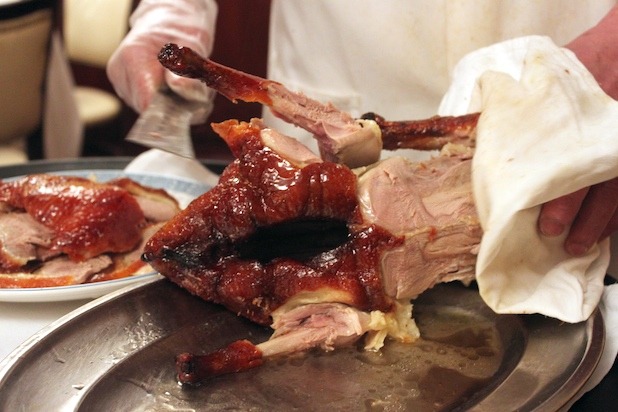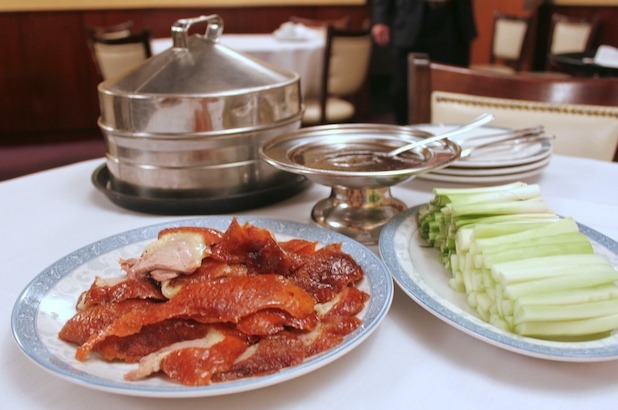How Peking Duck Gets Made Slideshow
Before being cleaned, the ducks are inflated with air to separate the skin from the flesh. In this photograph, the air has just started to be pumped into the duck, and in the next slide, you'll see it fully blown up (almost like a balloon) and learn why this is done.
Step 2: The Inflated Duck
Separating the skin from the flesh allows the fat to render more easily when cooking and the skin to tighten when drying (this helps create the super crisp and flavorful skin that Peking Duck is treasured for). The ducks are then cleaned out and ready for the next step of the process.
Step 3: Ducks About to be Dipped
In a huge wok over high heat, the hanging ducks are about to be dipped, two at a time, in a mixture of hot water, vinegar and maltose.
Step 4: Covering the Ducks with the Maltose Mixture
In this step, the chef moves the ducks around the liquid in the wok and uses a saucepan to coat the duck with the maltose mixture. This acts as a glaze, with sugar from the maltose and acid from the vinegar, that works on the ducks as they are hanged to dry immediately following this dip.
At home, you can also do a combination mixture of an acid and vinegar on your bird before drying it overnight.
Step 5: Hanging the Ducks to Dry
After being dipped in the maltose mixture, the ducks are immediately hanged to dry next to a strong fan (as you'll see in the next slide), so that they can dry quickly without too much of the glaze dripping off.
Step 6: Ducks Drying in the Fan
Here the chef is standing by the powerful fan that is used to dry the ducks for seven hours. They are then placed in a walk-in cooler, where they remain dry and cold until ready to be roasted in the standing oven.
Step 7: Roasting Ducks
Though there are ovens that now automatically rotate the hanging birds in the oven, Alex, the manager of the Peking Duck House, says, "There is nothing better than the old-fashioned way." The birds roast for an hour and a half in this super hot gas oven where they are rotated from top to bottom halfway through. The oven can fit up to 16 birds that are cooked before they are ready to be served. (Because of this long process, you should call ahead and reserve a duck if you plan on going in for lunch or dinner.)
Step 8: A Quick Dip in the Deep Fryer
Right before being served, the ducks are quickly placed in the deep fryer to make the skin extra hot and crispy. That's partly how it achieves the gorgeous, honey-brown skin.
Step 9: The Perfectly Cooked Duck
Presented to the table in this form, the duck is served with slices of fresh scallion and cucumbers, steamed homemade pancakes, and a homemade hoisin sauce. The sauce is a very important part of the meal as it adds a richly-seasoned depth and sweetness to the dish. The next step is the arrival of the chef to expertly carve the bird before it's prepared for you tableside.
Step 10: Carving the Duck
Part of the Peking Duck process is having the chef carve it for you at the table. Here the chef, who has been doing this for more than 30 years, quickly carves off hunks of crispy skin and tender pieces of meat. He begins with the neck, and steadily cuts at an angle, working his way around the bird.
Step 11: Finishing the Duck
The restaurant allows patrons (though they don't advertise it) to take the carcasses home to make their own duck stock for soup. The restaurant receives a shipment of 60-70 Pekin ducks from Long Island each day, so they only reserve a handful of carcasses to make their duck soup.
Step 12: Sliced Duck at the Table
The duck at The Peking Duck House is so good that customers have even said that it's better than the Peking Duck served in China. Though, the manager does add the caveat that they are probably just used to their duck. But still, it was one of the most flavorful and delicious ducks that we've ever eaten.
Step 13: Preparing the Duck Pancake Tableside
Another perk to eating Peking Duck is having the server prepare the pancake for you tableside. With the homemade hoisin sauce, scallions, cucumbers and the perfect amount of meat, and crisp skin, the waiter quickly rolls it, into what can almost be called a burrito, with a spoon before placing it on your plate. While some places serve the duck with steamed buns, the thin pancakes allow for the focus to be more on the ingredients rolled inside.

